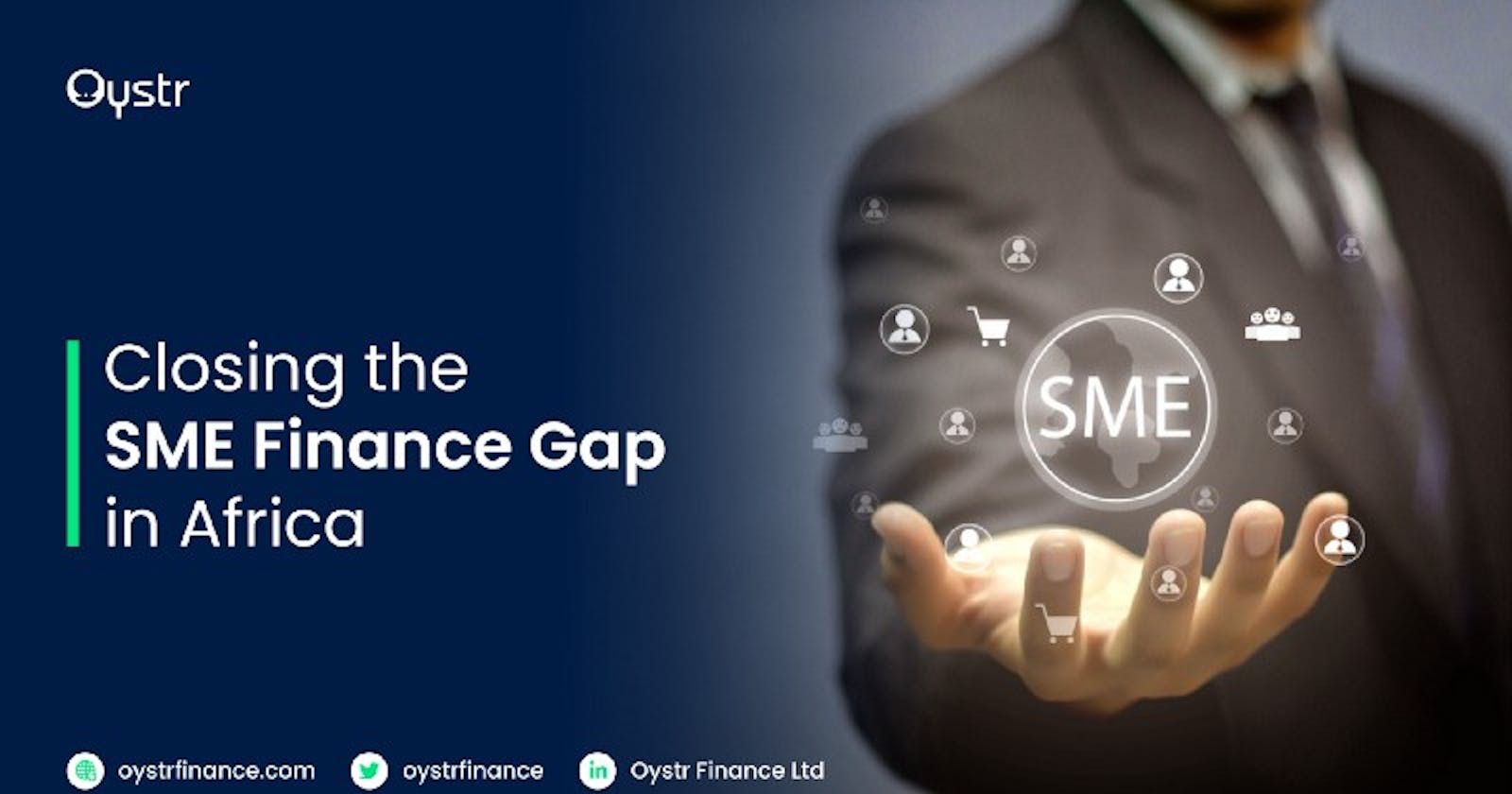Quality Financing for MSMEs has traditionally been hard to obtain, thanks to poor credit scoring, difficulties in accessing financial information, or a lack of collateral. However, these problems are now being eased by new technologies such as alternative lending platforms, which allow crowdfunding or fintech lenders to offer better access to financial inclusion and small business loans across Africa.
Closing the SME Finance Gap
The African Development Bank estimates that the Africa-wide finance gap in MSMEs is around $200 billion, and the International Finance Corporation (IFC) recently estimated it stands at a whopping $331bn. Clearly, the true scale of the shortfall is almost certainly even more significant, given the lack of data.
Small businesses usually lack meaningful sales and earnings histories, so they are so difficult to finance through traditional debt. This is precisely where the promise of fintech comes in. Fintech solutions are filling a small business funding gap in Africa. In Nigeria, Oystr finance is closing the gap by ensuring financial institutions use data from everyday transactions to provide individuals and businesses with better access to financial assistance.
Financial inclusion (FI) will ensure that MSMEs and SMEs can access much-needed capital for the growth or establishment of their firms and businesses. This will also allow them to create more jobs at the community and national levels.
What is Financial Inclusion?
Financial inclusion (FI) is a term used to describe the state of people using financial services and products created through financial technology. This kind of tech-powered innovation keeps banking networks open, accessible, and highly innovative. In other words, it’s a designated system centered on bringing financial services to those who don’t already have access to them.
According to reports from the world bank, an estimated 50% of adults lack a bank account and are therefore limited in their access to financial services, impacting their ability to save, borrow, and build wealth.
It is necessary to clarify the term “financial inclusion.” In the past, financial inclusion was built on the idea that individuals have access to money and essential services such as deposits, loans, or transactional accounts. The objectives were to extend banking services to the poor to enhance their economic and social condition. Nonetheless, providing microcredit fostered the indebtedness of poor populations. It is no longer enough to offer banking services only, but rather financial education should complement and strengthen these services, which can encourage a lasting exchange of skills and knowledge.
SMEs and MSMEs
Banks have historically poorly served SMEs, as a lack of collateral and credit history has excluded them from many financial products. Conventional collateral requirements and prohibitive bureaucratic credit scoring systems exclude many small businesses from bank loans. It is expected, considering that traditional lending methods have significant shortcomings when applied to this sector. These include the fact that most SMEs are informal and cannot easily provide the amount of collateral required by banks and that SME borrowers often have insufficient documentation or incomplete credit histories to show reliability. Banks also tend to overestimate lending costs to small businesses, particularly in terms.

Small Businesses
However, there has been a growing movement within banks in the last few years to serve the sector better. This is seen through innovative products, more tailored lending solutions, and increased availability of information on how to access the finance they need.
Although high risk, SMEs represent an exciting investment opportunity as they are a crucial driver of economic growth and development in Africa. They are vital to wealth creation, job creation, and more equitable income distribution.
The continent’s MSMEs are confronted with a formidable funding barrier exacerbated by the fact that many financial institutions still have outdated underwriting criteria and credit scoring methods and a low-risk appetite. Yet there has been some progress. The African Development Bank (AfDB) reported that annual credit extended to SMEs jumped from $54bn in 2011 to $68bn in 2015, with fintech firms playing an increasingly important role, particularly in East Africa. For example, Kenya’s M-Pesa microfinance ecosystem handles payments worth over 25% of the country’s GDP annually. At the same time, tZERO, a blockchain-based alternative trading system, has entered into a joint venture with BOX Digital, allowing it to launch a security token marketplace for listing and trading such tokens.
Constraints From Financial Institutions
In recent years, the African SME sector has been growing in sophistication and ambition. A focus on large corporate projects has characterized funding over the decades as banks have struggled to find ways to finance smaller companies.
Lending to micro-enterprises is often not considered a viable business opportunity despite the enormous potential market. One primary reason is the inability of traditional banks and microfinance institutions to target the small business segment effectively.
There are some distinctions between small and micro enterprises, but micro-businesses (usually those with less than ten employees) are even farther from conventional financial processes. They often require little cash and have little financial backing or history, falling virtually entirely outside the lending practices of the majority of banks. In this environment, most micro-firms seek working capital from family or friends.
Small and medium enterprises constitute the biggest share of most countries’ business and economic activity. According to the International Financial Corporation, SMEs account for over 90% of enterprises and up to 70% of employment in many developing nations but lack affordable credit, impeding their expansion. In a world where micro, small, and medium enterprises (MSMEs) contribute over 50% of global GDP and 45% of employment, companies have substantial untapped opportunities to offer financial services to MSMEs. Where lending or equity investment wasn’t a practical option before, it is now viable and profitable. Lending solutions can be direct or indirect. Direct solutions involve disbursing the loan directly by the financial institution or its technology partner.

New investment products, innovative fintech approaches, and government programs all have the potential to unlock a vast amount of funding for the continent’s small businesses.
African banks are starting to follow a more proactive approach to SME financing, with large-scale growth seen in the sector in 2018. Banks have typically been reluctant to lend directly to small enterprises, preferring instead to partner with development banks and MFIs to provide access to finance through concessional lending.
Fintech Closes the Gap
While much of current financial investment activity is focused on high-risk and remote micro, small and medium-sized enterprises (MSMEs), the greatest impact is still being seen in the fintech revolution itself. FinTech can refer to a range of enterprises and projects, but one use cites the use of technology to lend to high-risk and remote MSME borrowers.
Technology-enabled solutions are now disrupting this market, enabling local banks and credit unions to access technology that allows them to serve micro borrowers better. Moreover, it can be applied across the continent — from remittances in Kenya and other African countries in the East through to MSMEs in South Africa and Nigeria in the West.
The Oystr Identity
Millions of underserved Africans use informal methods to process financial transactions. Consumers use money transfer remittances and bill payments through MMOs & agents. Oystr enables the critical pillar of financial inclusion, enabling them to impact the formal economy. The objective is to create a frictionless experience for all stakeholders and empower individuals who cannot access these services due to a lack of identification or physical presence.
Having an Oystr identity means small businesses and medium businesses can access financial assistance even without a formal bank account. Financial institutions can get alternative financial records and accurate credit scores on their previously underserved customers, thereby closing the SME finance gap in Africa. Business owners who are once seen as unfit to access loans can access them, and others can get better products to attain good financial health.
Using Financial Identity as a Service, operators can create new or upsell existing lines of business that utilize accurate consumer financial data as the foundation for product creation.
With Oystr, you can provide competitive financial support to customers in emerging markets. Our technology gives you low-cost access to new markets with proven credit performance.
Oystr is still partnering with financial institutions to create a change for millions of underserved Africans. Visit our website to learn more.

